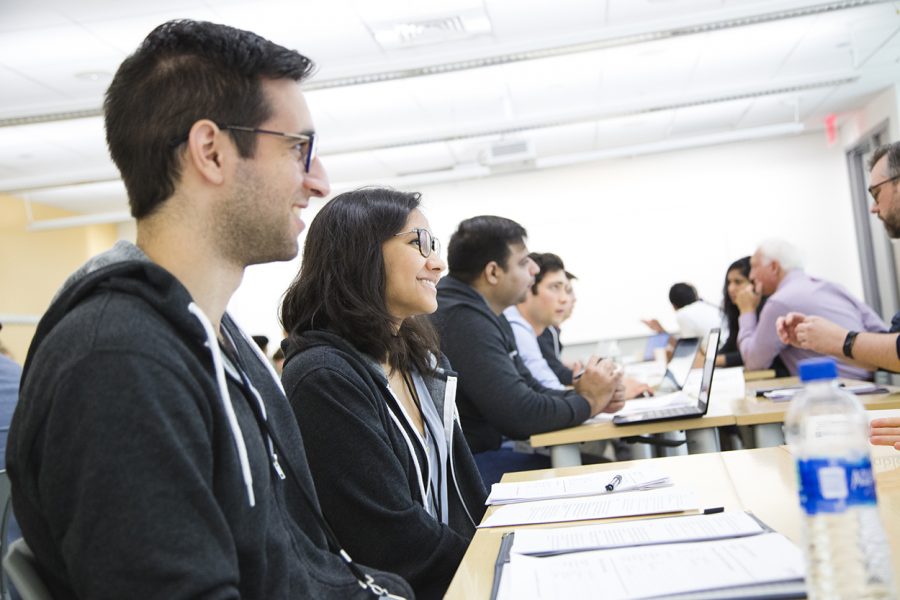The Stern School of Business opened the Creative Destruction Lab-New York City, shortened to CDL-NYC, a program designed to help startups get to market, this semester. It is the first of its kind in the United States.
Creative destruction is the idea that entrepreneurial innovations must destroy existing economic structures on the road to progress. Created in partnership with the University of Toronto’s Rotman School of Management, which pioneered the first Creative Destruction Lab in Canada, NYU’s own version of the lab will help early-stage scientific and technological startups scale quickly and gain the funding needed to enter the market.
At CDL-NYC, 289 applications poured in for the 25 spots initially offered. Stern accepted two additional startups to the nine-month program, bringing the inaugural cohort to 27 startups. Approximately 30 percent of the startups have some NYU affiliation, according to Deepak Hegde, the lab’s director and associate professor of Management and Organizations in Stern.
“The key objective of the program is to help startups with a deep technological or scientific component to maximize the chance of software success, commercial success,” Hegde said. “So the startups that come to the program are really very, very close to the science. So they are just out of the lab, and they are hoping to raise their first formal round of funding that is necessary to commercialize their ideas over the course of the program.”
Startups in the program will benefit from three key features. First, they will have access to a variety of mentors, including business leaders, technical advisors from various departments at NYU and investors. Secondly, corporate partners will host workshops and offer free services, such as legal help and tax and accounting services, to the startups. Finally, each of the startups will be paired with a second-year MBA student in a class Hegde teaches who will help in its growth process for the duration of the program.
One of the students in this course, Mai Hinz, said the class had a hands-on role in the application process.
“We started the semester off reading through all of the applications to the [CDL-NYC] and learning ways to evaluate the different companies,” Hinz wrote in an email to WSN. “This culminated in our class interviewing founders alongside other members of the [CDL-NYC] and helping to select the final cohort. It was very exciting to be in a room with so many founders and have the chance to hear directly from them about their visions and motivations.”
Students have not yet been paired with the startups they will be working with over the next nine months, but no matter the startup, Hinz says she is looking forward to the experience.
“I’m looking forward to gaining more exposure to the ecosystem from founders to scientists to mentors to investors, observing and learning from them about how they identify opportunities and tackle challenges in real time,” Hinz said. “Drawing from these experiences as well as my own personal ones, I hope to then materially aid the startup I work with [to] build its business and achieve its objectives.”
Unlike some other startup accelerators, CDL-NYC is free of charge to participants. The program is funded by donations from corporate partners and from alumni, including NYU Board of Trustees Chair William Berkley and former Stern Board Member Stewart Satter.
Hegde says the lab has a prime location that will give its startups a leg up on the competition.
“If you think about New York itself, right now we are arguably, by several metrics, the fastest growing and most attractive hub for high-tech startups,” Hegde said. “It is that attraction of being in an ecosystem and having connections to the ecosystem through our expert list of mentors, both business and scientific, I think that makes it pretty attractive to be here.”
Though the startups differ in their trajectories for growth, Hegde hopes they will all benefit from two key takeaways.
“We hope that certainly they walk away with two things: one is a very clear vision of how their technical ideas will transform and disrupt markets,” Hegde said. “The second thing is obviously the initial funding that they really need to execute on all the plans to accomplish that objective.”
Email Sarah Jackson at [email protected].

























































































































































